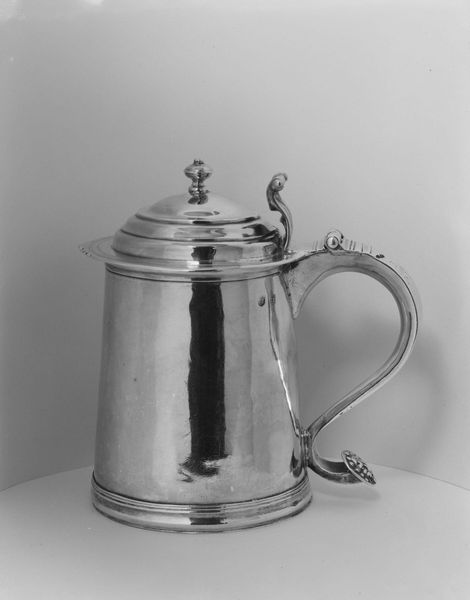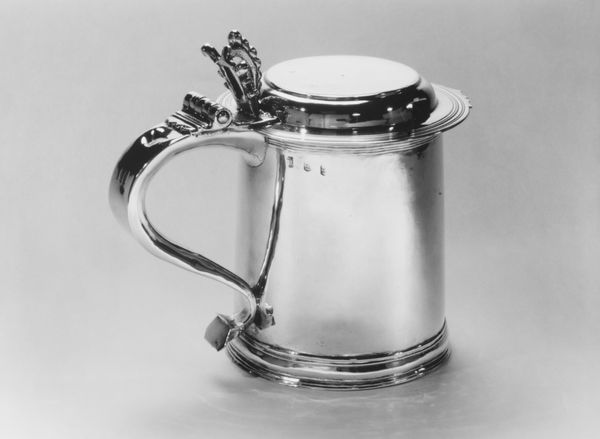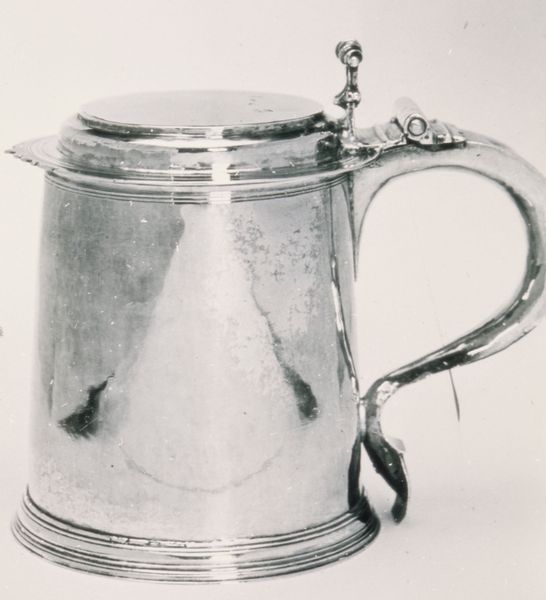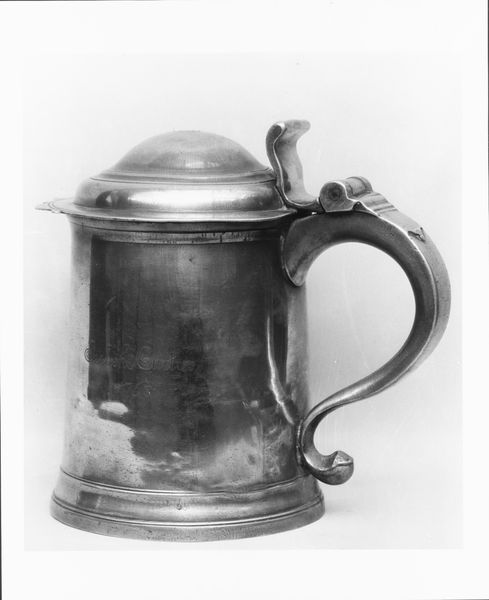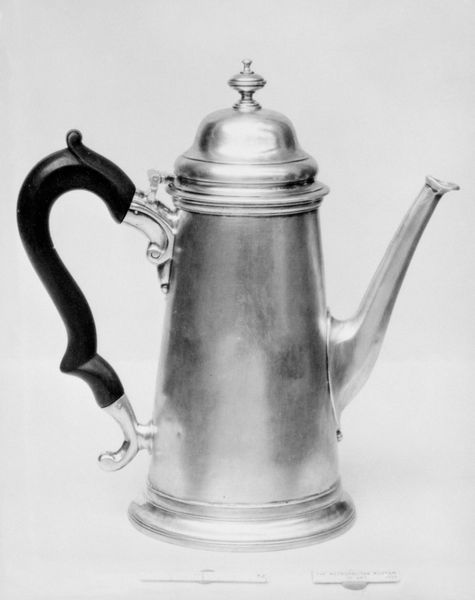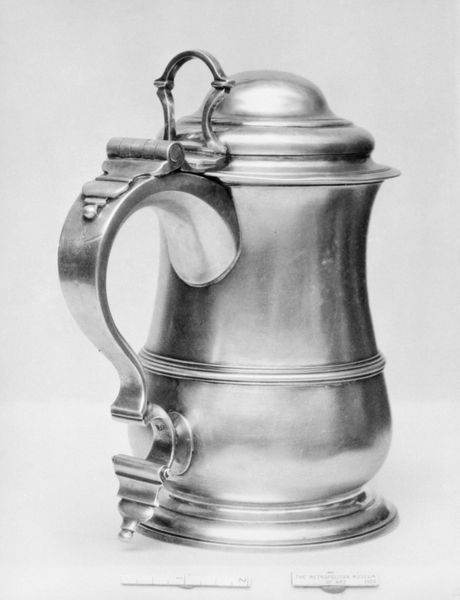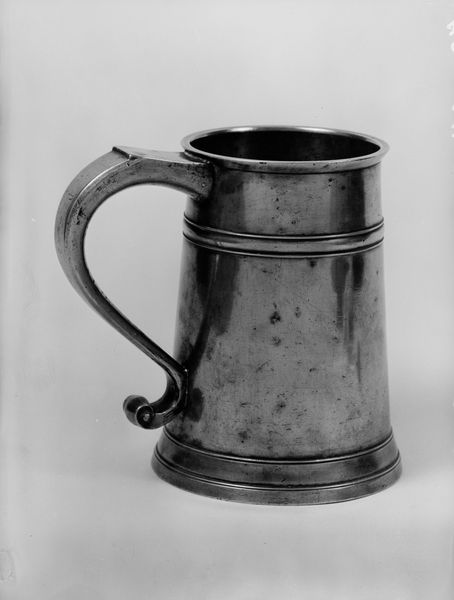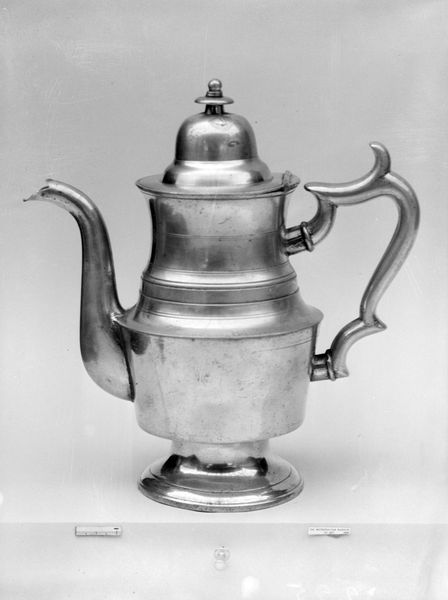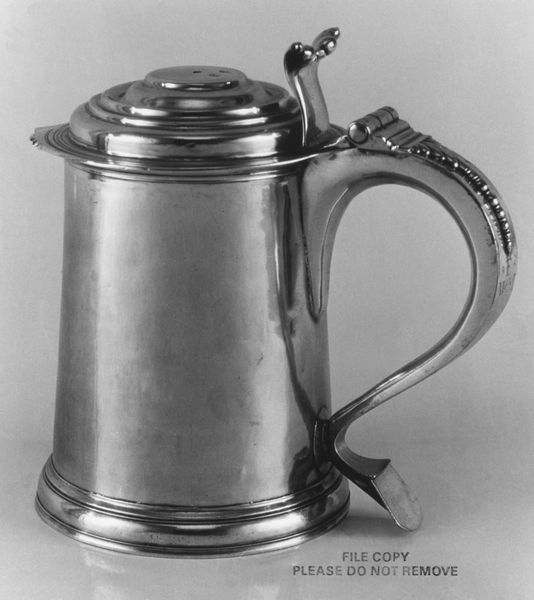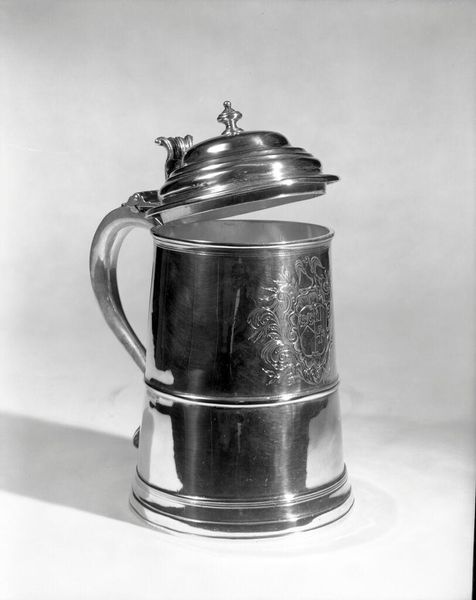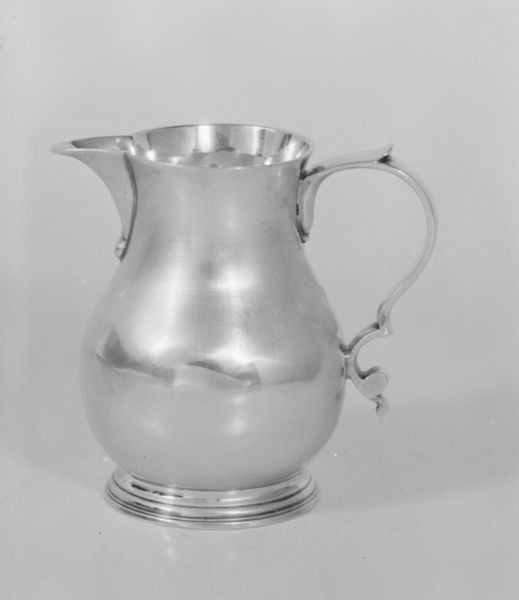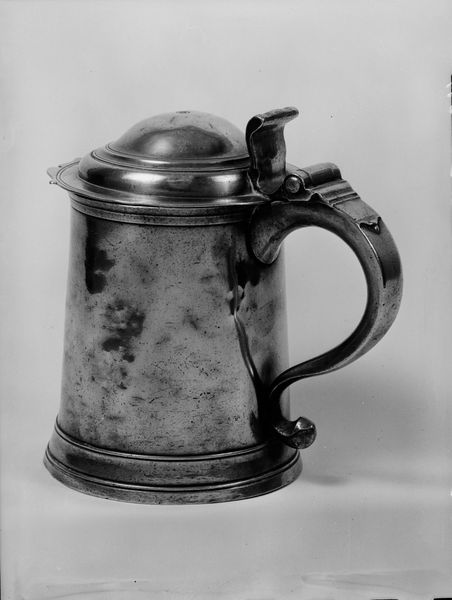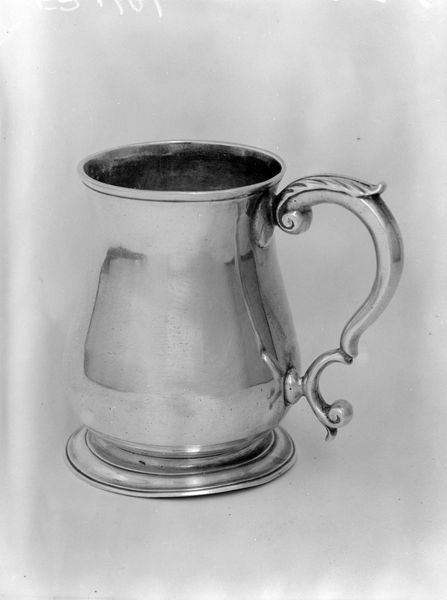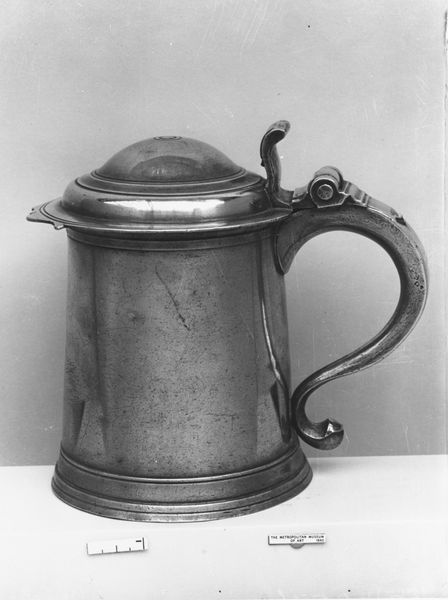
silver, metal, sculpture
#
silver
#
metal
#
sculpture
#
decorative-art
#
yellow
Dimensions: 5 1/4 × 5 1/4 in. (13.3 × 13.3 cm)
Copyright: Public Domain
Curator: Here we have an intriguing example of early 18th-century craftsmanship: a silver tankard dating from 1715 to 1716, currently housed at the Metropolitan Museum of Art. Editor: It strikes me as incredibly austere, almost devoid of ornamentation, save for that slightly overwrought thumbpiece. Does it read as puritanical to you, or am I projecting? Curator: It's more than likely reflecting the social context of its creation, actually. At that time, English silver was impacted by stricter regulatory controls regarding the fineness of silver and standardization; perhaps simplicity was demanded for practical production reasons as well as dictated by tastes. Editor: Even so, one can’t deny the subtle visual pleasures inherent in its composition: the way the light catches the gently curved surface of the barrel, offset by the crisp horizontals of its base and lid... There is a quiet elegance in that restraint. Curator: And consider the broader impact of such objects! These weren't just drinking vessels, they signified status and wealth. Craftsmanship becomes intertwined with socio-economic history here—who made it, for whom, and what statement did it make about its owner’s position in society? The marks would probably tell a very specific story. Editor: Yes, I agree on the social context, but for me the inherent structure offers something deeply pleasing, regardless of its social implications. The semiotic language of cylindrical form—the connotations of containment, of the domestic sphere… the dialogue between mass and line. It is very balanced! Curator: Right. So, looking beyond its obvious function, we glimpse a story about labor, about trade, and about a developing sense of bourgeois display. And while, as you suggest, there's beauty to be found in its geometry and form, for me that all comes back to material conditions from which it was produced. Editor: An object lesson, in more ways than one, it seems. I can appreciate the ways that examining production will change your perception of what a decorative artwork might be. Curator: Likewise! Understanding the ways the composition and inherent nature impact the viewer will cause one to explore its story with more gusto!
Comments
No comments
Be the first to comment and join the conversation on the ultimate creative platform.
